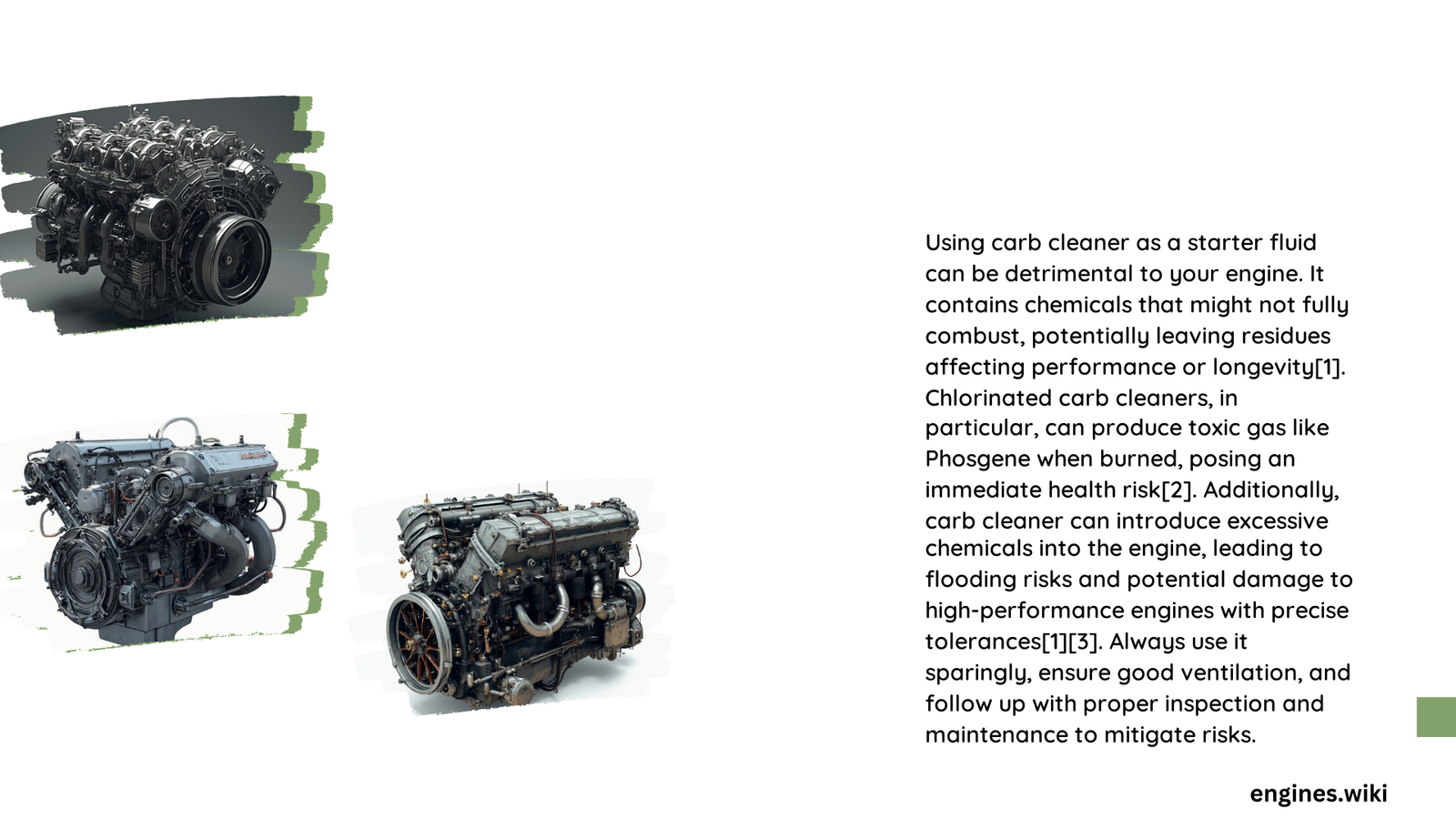Carb cleaner, a popular solvent used for cleaning carburetors and engine parts, has both benefits and potential risks. While it can effectively remove deposits and improve engine performance, improper use or overuse can lead to damage. The chemical composition of carb cleaners, which often includes acetone, toluene, and methanol, can interact negatively with certain engine components. This article explores the potential impacts of carb cleaner on engines, best practices for use, and alternatives to consider.
What Are the Main Ingredients in Carb Cleaners?
Carb cleaners typically contain a mixture of powerful solvents designed to dissolve carbon deposits, varnish, and other contaminants. Common ingredients include:
- Acetone (20-30%)
- Toluene (35-45%)
- Methanol (25-35%)
- Dichloromethane (in some older formulations)
- Other solvents like MEK, 2-Butoxyethanol, and Isopropanol
Each of these chemicals has specific properties that make them effective cleaners, but they also come with potential risks.
How Can Carb Cleaner Affect Engine Components?

The solvents in carb cleaners can interact with various engine materials in different ways:
- Rubber and Plastic Parts: Acetone and other solvents can cause swelling, softening, or degradation of rubber seals and plastic components.
- Metal Surfaces: Some solvents, particularly those containing chlorine, can be corrosive to certain metals if left in contact for extended periods.
- Paint and Coatings: Carb cleaners can strip paint or protective coatings from surfaces they contact.
Here’s a table summarizing the potential effects on different materials:
| Material | Potential Effect |
|---|---|
| Rubber | Swelling, softening, cracking |
| Plastic | Degradation, melting |
| Metal | Corrosion (with certain solvents) |
| Paint | Stripping, discoloration |
What Are the Risks of Using Chlorinated Carb Cleaners?
One of the most significant risks associated with carb cleaners comes from chlorinated solvents, particularly dichloromethane:
- When burned, it can produce highly toxic phosgene gas
- Exposure to phosgene gas can cause severe respiratory issues or even death
- There have been documented cases of fatalities due to the use of chlorinated solvents in enclosed spaces
Does Carb Cleaner Improve Engine Performance?
When used correctly, carb cleaner can have positive effects on engine performance:
- Removes carbon deposits and varnish from carburetor components
- Restores proper fuel flow and atomization
- Can improve fuel economy and reduce emissions
- May increase engine power by ensuring proper air-fuel mixture
However, these benefits are typically short-term and should not be considered a long-term solution for engine issues.
What Are the Best Practices for Using Carb Cleaner Safely?
To minimize risks and maximize benefits when using carb cleaner:
- Always read the label and avoid products containing chlorinated solvents
- Use in a well-ventilated area, away from heat sources or open flames
- Wear appropriate personal protective equipment (PPE) including gloves and eye protection
- Apply the cleaner sparingly, using only the amount necessary
- Allow the cleaner to evaporate completely before starting the engine
- Avoid prolonged contact with rubber, plastic, or painted surfaces
- Never use carb cleaner as a fuel substitute or additive
Are There Alternatives to Traditional Carb Cleaners?
For those concerned about the potential risks of carb cleaners, several alternatives exist:
- Ultrasonic Cleaning: Uses high-frequency sound waves to clean parts without harsh chemicals
- Steam Cleaning: Effective for removing deposits without solvents
- Bio-based Cleaners: Made from plant-based ingredients, these are less toxic and more environmentally friendly
- Manual Cleaning: Using wire brushes and mild detergents can be effective for light cleaning
How Often Should Carb Cleaner Be Used?
The frequency of carb cleaner use depends on several factors:
- Engine age and condition
- Driving habits and conditions
- Fuel quality
- Maintenance schedule
As a general rule:
- For older carbureted engines: Every 3,000-5,000 miles or annually
- For fuel-injected engines: Less frequently, typically during major service intervals
It’s important to note that regular use of carb cleaner is not a substitute for proper engine maintenance.
What Are the Long-term Effects of Carb Cleaner on Engines?
While immediate effects of carb cleaner use can be positive, long-term or excessive use may lead to:
- Degradation of rubber seals and gaskets
- Corrosion of metal components
- Damage to sensors or electronic components in modern engines
- Potential contamination of engine oil
These effects can ultimately lead to decreased engine performance, increased emissions, and potentially costly repairs.
How Can You Identify Quality Carb Cleaners?
When selecting a carb cleaner, look for:
- Products from reputable manufacturers
- Clear ingredient lists without chlorinated solvents
- Specific formulations for your engine type (carbureted vs. fuel-injected)
- Products with lower VOC (Volatile Organic Compound) content
- Cleaners that meet environmental regulations in your area
What Should You Do If Carb Cleaner Damages Your Engine?
If you suspect carb cleaner has caused damage to your engine:
- Stop using the product immediately
- Document the damage with photos and receipts
- Consult a professional mechanic for assessment
- Contact the manufacturer if the product was used as directed
- Consider having affected components replaced or repaired
In conclusion, while carb cleaner can be an effective tool for engine maintenance, it’s crucial to use it carefully and sparingly. Understanding the risks and following best practices can help ensure that your engine benefits from cleaning without suffering long-term damage.
References:
1. SmokStak Forum
2. 7CF Industries
3. 3M Technical Data Sheet
4. CRC Industries SDS
5. Berryman Products SDS
